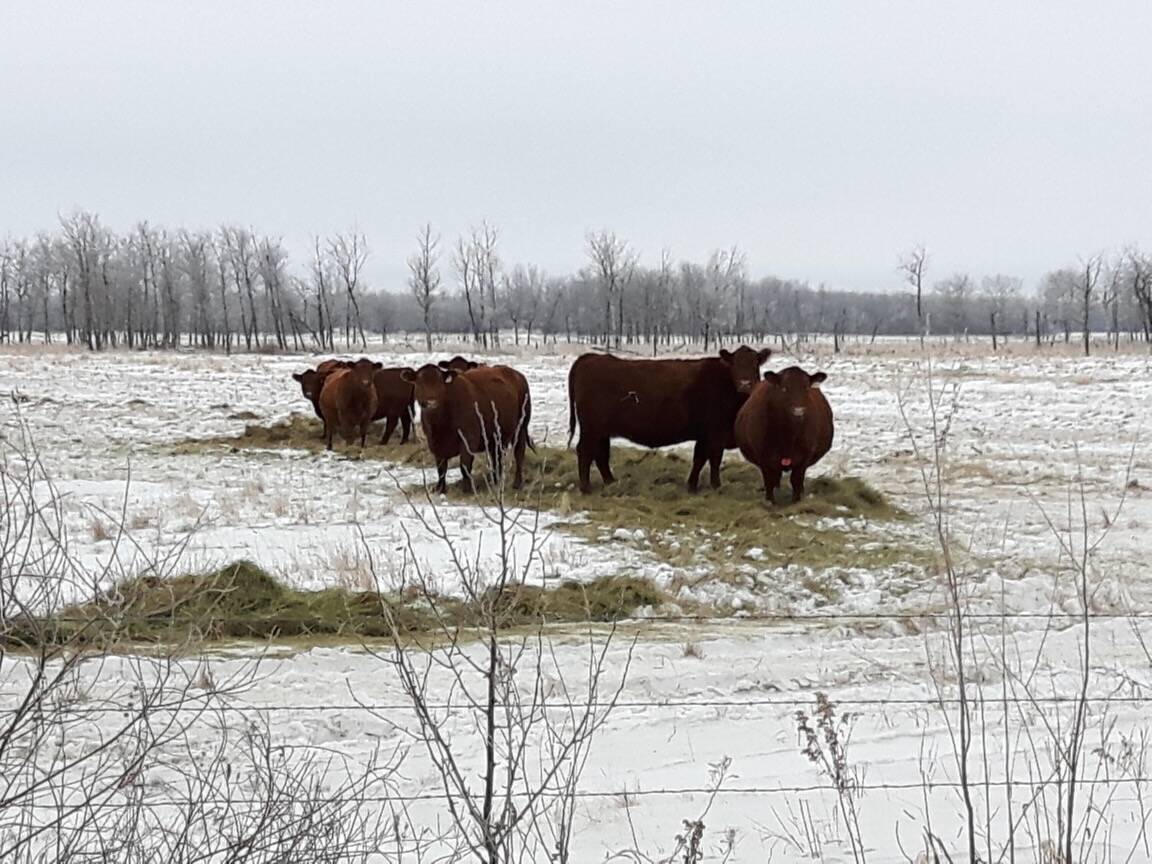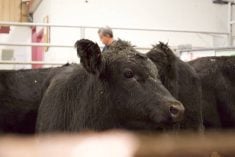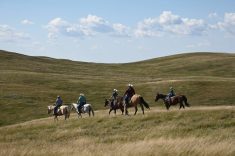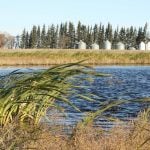A warm start to winter has caused many beef cows after weaning to come off pasture in decent shape. Some of these cows are not truly obese, but they retained a lot of flesh.
Those beef cows in optimum body condition should be put on a nutritious feeding program that maintains them until they calve in two to three months, while fleshy pre-calving cows should be put on similar diets which do not allow body weight loss. All it takes from beef producers, in both cases, is a little common sense.
Read Also

Prevent nitrate poisoning in overwintering beef cows
High-nitrate feeds can be deadly for overwintering beef cows. They can be used, but only if they’re processed and diluted in a lower nitrate ration.
Such common sense starts with assessing one’s cowherd body condition score (BCS). As a beef nutritionist, I like to use the wider U.S. scale of 1 to 9, which tells us the nutritional status of each cow just by looking at how much body fat is carried. Associated research predicts that overwintered mature cows and replacement heifers that calve at a target BCS of five to six (scale of 1 = emaciation to 9 = very obese) are destined to have a successful calving season compared to freshened skinny cows (BCS below 5). Later on, they return to estrus to get successfully rebred in order to maintain a full-year calving interval.
The funny thing is that this November, I have been hard-pressed to find snow or many skinny cows on the Prairies. For example, I walked among a herd of 200 red Angus-cross beef cows on dried-out pasture just before their calves were shipped. I believe the average BCS score of this herd was around 6.5 — no skinny cows, a few cows in the 5-6 range (moderate to good) and a higher proportion of 7-8 (fleshy to obese).
It seems odd that limited research shows freshened beef cows — ones that carry lots of flesh and are not too fat — have a quicker return to estrus than optimum-BCS penmates. Unfortunately, their conception rates fall off dramatically during the breeding season. Plus, if a cow becomes obese, she tends to lay down internal fat, which often leads to calving problems once her calf is born.
These things are good to know, because they give me a clearer picture to design current late-gestation feeding programs that should be fed particularly to herds that calve this February-March. Then, they can be modified to be fed to nursing beef cows until the subsequent breeding season. In doing so, I follow three mainstream dietary guidelines:
- Meet National Research Council (NRC) requirements for late-trimester gestating cows: 55-58 per cent TDN, nine to 11 per cent protein, 0.25 per cent calcium and 0.20 per cent phosphorus, complemented with salt, trace mineral and vitamins. Dry matter intake estimates are about 35-40 lbs.
- Modify diets to cowherd BCS: cows in a BCS of 5-6 should gain about 100 lbs. of body weight to recover their fetal and placental weight after calving. Fleshier cows (BCS of 7-8) should be fed to maintain their body weight, not to lose body condition.
- Adjust for cold winter weather: energy density of any late-gestation diet should be increased in these diets as the weather gets colder, based on a rule of thumb that for every 1 C drop in temperature below 0 C, the beef cows’ TDN (total digestible nutrients) energy maintenance requirements are increased by about two per cent.
As a testimonial to these parameters, a friend of mine operates a 400-cow-calf farm, which went through a very dry summer. Along with other forage, he salvaged his scant canola crop by turning it into good overwinter beef feed. Its analysis showed TDN of 54-60 per cent and protein of 11-12 per cent, which partially meets late-gestation cow nutrient requirements. As a bonus, the canola crop’s notorious sulphur levels are very low. High sulphur levels can cause polio in cattle.

The details of late-gestation diets are listed in the table shown above.
My friend’s cowherd is in optimum body condition going into the winter. That’s because his harvested hay fields had a lot of green regrowth in which most of his cows grazed, right up to weaning of their calves. Now that he moved them onto snowy home pastures, one or two of these TMRs are going to be fed for the next few months until calving. Producers in a similar situation — having a cow herd of good body condition — might consider their own beef cow diets along similar nutritional lines.
















